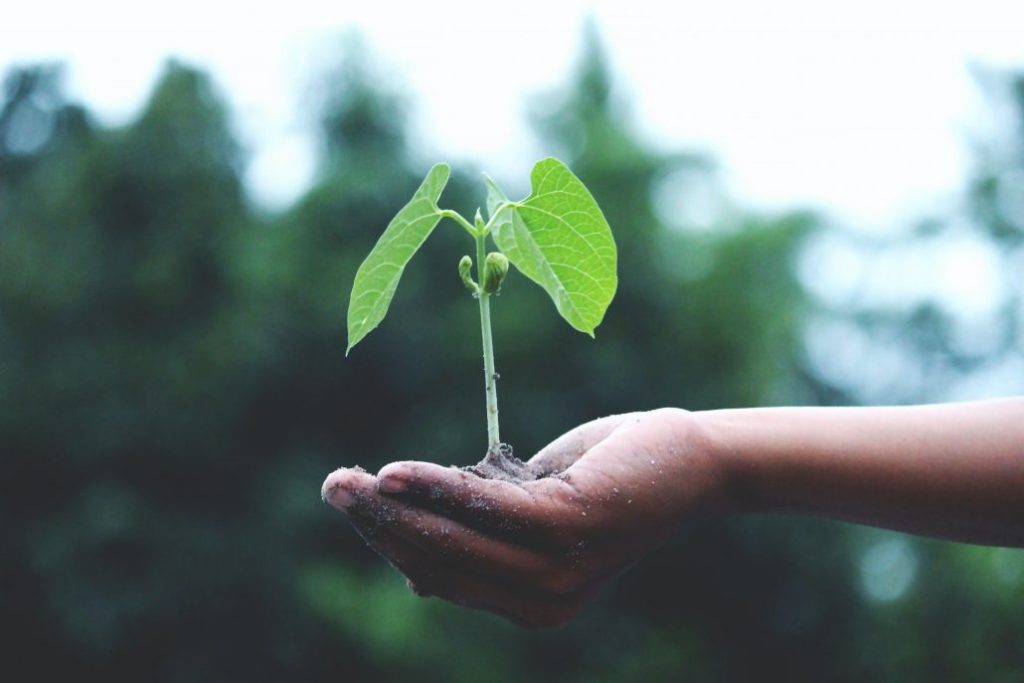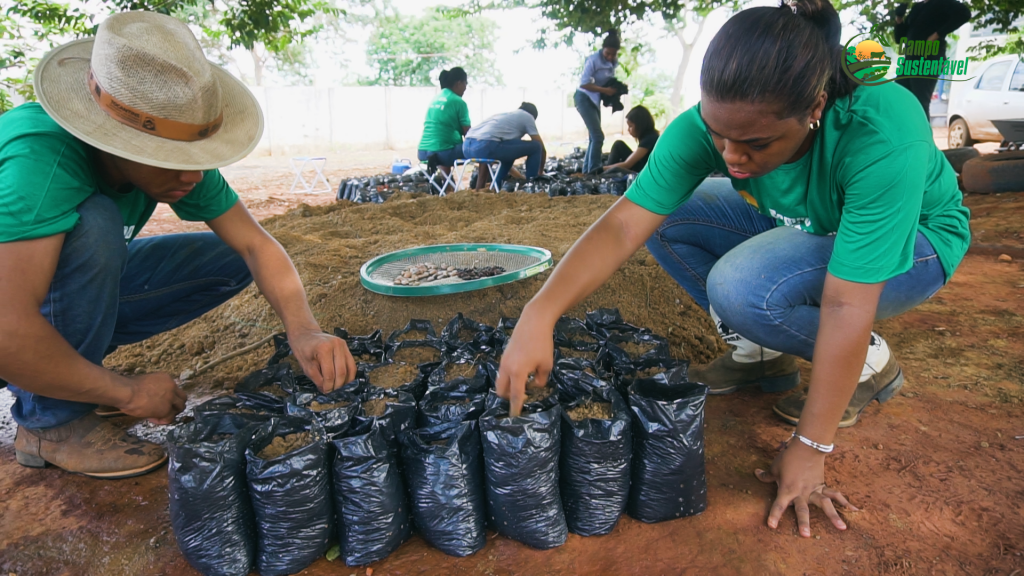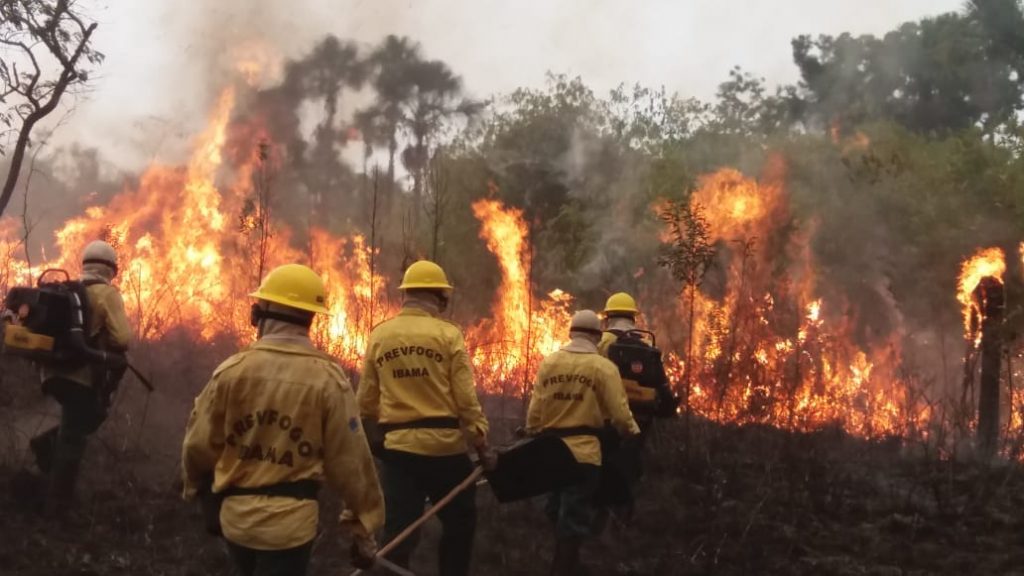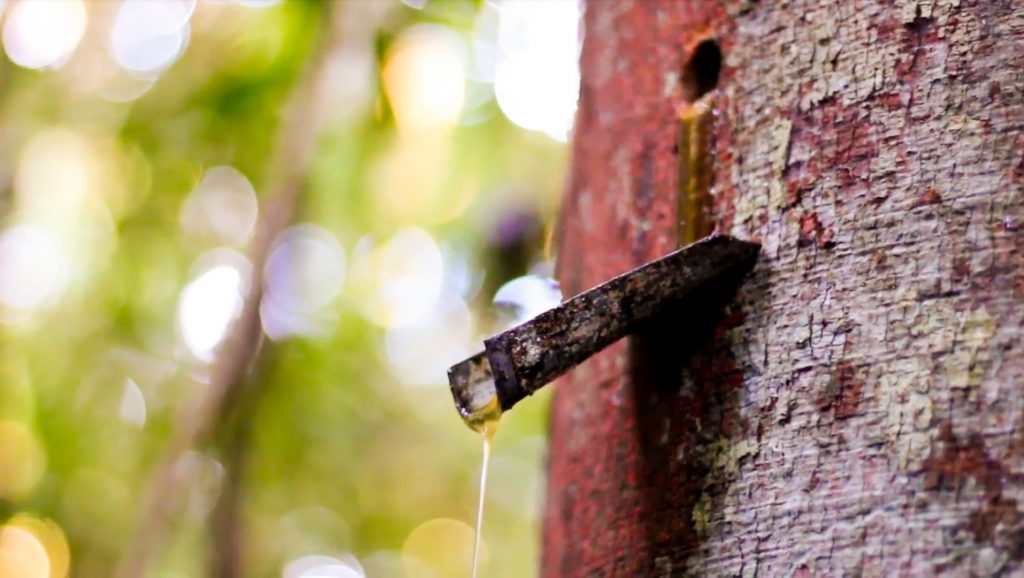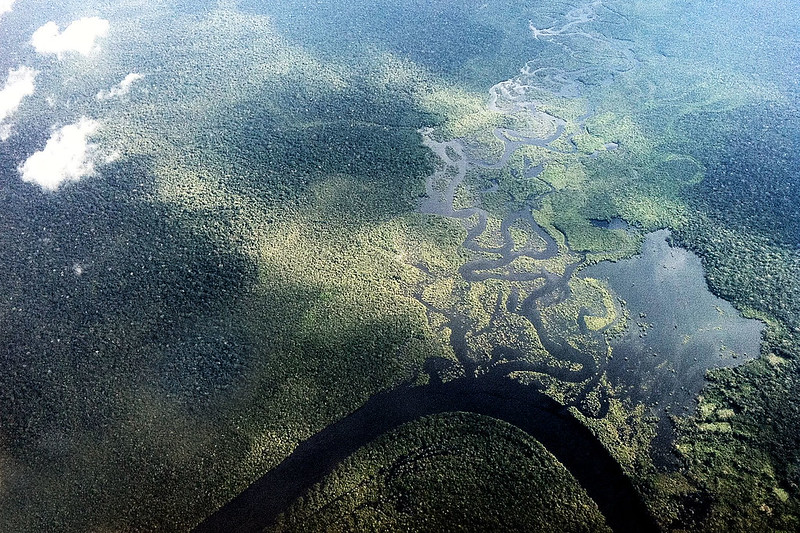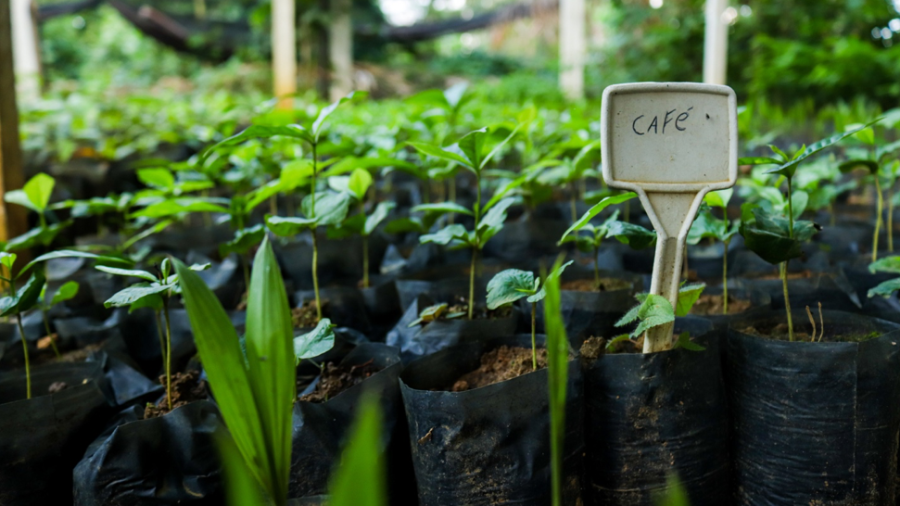
Agroforestry-grown coffee gives Amazon farmers a sustainable alternative
Studies show that agroforestry systems diminish the impacts of climate change on coffee production, improve yields, and allow farmers to cultivate additional plants for extra income.
Originally published in em Mongabay
by Sibélia Zanon
Photo: Henrique Saunier
After nearly giving up on their coffee plantations, farmers in Apuí, in Brazil’s Amazonas state, have turned to a different farming model. Through agroforestry, they have found they can both generate an income and keep the forest standing. Apuí is among the top 10 municipalities in terms of deforestation rates in the Brazilian Amazon, driven by the growth of the cattle industry.
Introduced in 2012 with support from the Institute for Conservation and Sustainable Development of the Amazon (Idesam), Café Apuí Agroflorestal is the first coffee to be grown in an agroecology system in the state of Amazonas. The system has not only prevented cattle pastures from taking over old coffee plantations, but also doubled productivity in the region.When Idesam kicked off its project, farmers in the region were producing an average yield of eight bags of coffee beans per hectare, much lower than the municipality’s potential. Today, the average harvest is 15 bags per hectare, and that number could grow to 25 bags per hectare.
“Today we have 30 families farming 50 hectares [124 acres] of coffee in an agroforestry system. But the potential is gigantic,” says Marina Yasbek Reia, director of the Café Apuí Agroflorestal project.“We used to harvest just a little and sell cheap — hardly earned anything,” says Ronaldo de Moraes, one of the farmers enrolled in the project. “Now, we sell at higher prices and things are a little better. We can buy what we need to care for our crops and buy things for our homes, like a refrigerator or a stove.
“I’m happy,” he adds. “There are a lot of people working in this same project and everyone is happy. We earn a little money, you know? It’s a lot of work, but it’s really worth it.”Abandoned plantations offer opportunity
Located alongside the Trans-Amazonian Highway near the border with the state of Rondônia, Apuí became a municipality in 1987 through the development projects implemented under Brazil’s military dictatorship. Five years earlier, the Rio Juma Settlement Project had been created in the region, the largest in Latin America at the time. Settlers from all over Brazil flocked to the region to claim large swaths of open territory. The first groups of migrants came from the state of Paraná and were followed by people from other states in southern Brazil.
Many settlers already knew about coffee farming and brought with them their conventional monoculture farming systems: large treeless plots flooded in sunlight, with pesticides in the mix. For some 20 years, coffee production was strong in Apuí. But the inevitable degradation of the soil caused farmers to begin abandoning their plantations around 2012. “Without spending money on supplies, without constant technical support and, especially, without tropical technology or that more compatible with the Amazonian climate, the soil became worn out,” Reia says. “Our soil is acidic, so if you don’t work at it, you don’t get any coffee here.”When the experts from Idesam arrived in the region, they saw an opportunity. Patches of forest had sprung back up in the abandoned plantations, supplying organic material to the soil and shade for the fruit trees. Coffee plants, in particular, adapt well to low light. As a result, the abandoned plantations were healthier than those being farmed by traditional methods.
This led the specialists to create a coffee farming model in Apuí based on the agroforestry system, where a mix of crops is cultivated together with other plant species. In the beginning, each farmer received funding to rehabilitate a hectare (2.5 acres) of coffee plantation, which included the distribution of 10,000 seedlings of native Amazonian plant species over the first two years. Among them were trees that could be used for wood, like jatobá and mahogany, and those that could be harvested for their fruit and seeds, including cocoa, açaí, Brazil nut, carapa and copaíba. This gives the farmers an extra source of income beyond what they make from coffee.Like the forest ecosystem that it mimics, the Apuí agroforestry coffee project feeds into a wider network. Cidades Florestais, also developed by Idesam with support from the Amazon Fund, is aimed at producing essential and vegetal oils from native plant species. Six mini oil extraction facilities have been established in Amazonas, one of them recently inaugurated in Apuí, which will buy andiroba, copaíba and other aromatic plant species being grown by the coffee farmers.
The Café Apuí Agroflorestal project is funded by WWF, WeForest and, most recently, reNature. With a contribution of 300,000 euros ($36,400) from reNature in October, the goal is to expand the project by adding up to 200 family farmers over the next three years. Today, farmers joining the initiative receive continuous technical support and subsidies of up to 15,000 reais ($2,800) in the form of supplies, seedlings, machinery and services. Idesam’s goal is to make the project self-sufficient so that the sales of the coffee produced can cover the investments, which today come from private partners.
The supply chain for the project links the farmers to a greenhouse that supplies native seedlings, and a local roasting plant that roasts, grinds and packages the coffee. To get the coffee to market, a startup called Amazônia Agroflorestal was created. Today, Café Apuí is sold in many Brazilian states, with the widest distribution in Amazonas and São Paulo, and has been exported twice to Dutch firm Euro Caps, which produces coffee capsules for the popular Nespresso machine.

Socioenvironmental coffee plantations
“We want to grow while maintaining our connection with the landscape,” project director Reia says. “We will involve more families in the project because we want to create agroforestry corridors to connect the fragments [of the rainforest]. This is very important.”
Among the benefits of agroforestry are the protection of biodiversity, soil enrichment, reduced erosion, preservation of water quality, and diminished climate change effects.“Our soil became richer,” says de Moraes, the farmer. “In conventional [farming], we would spread poison [herbicides] to clear off vegetation. That was already damaging the soil, which was always bare, it didn’t have that dry covering of natural compost. This meant the plant’s roots were exposed to the sun. Today the roots are covered by those dry leaves that hold in more humidity. The coffee is more beautiful and we have higher yield.”
Reia says investing in social development for small rural farmers in Apuí is one way to fight back against the advance of the cattle ranchers. Apuí is among the Amazonian municipalities experiencing the highest rates of deforestation, largely through slash-and-burn clearing. There were 837 fire outbreaks between January and July 2020, according to date from Brazil’s space agency, the highest number in the last 10 years. In July, Apuí was the municipality with the most fires inside the states that make up the Brazilian Amazon. In 2019, it was among the top 10 municipalities by deforestation rate in the Brazilian Amazon.“Families need to have the conditions to stay on the land, because if they stay on the land, they are a conservation factor,” Reia says. “If they leave their farms, land grabbers soon move in and then trees are cut to make extensive pasture. Then it’s really tragic, the sad situation here in southern Amazonas, in Apuí which is becoming a new forefront for deforestation. The squatters work to connect small plots, cut down the trees and make pasture.”
Agroforestry diminishes the impacts of climate change
The impact of climate change on coffee production is already well-documented. A 2015 study warned that rising temperatures and changes in rainfall patterns would diminish the productivity of arabica coffee (Coffea arabica) worldwide, reduce quality, and increase pressure from pests and disease.
In an analysis of coffee-farming regions in the Brazilian states of Minas Gerais and Espírito Santo, a study published last year by researchers at Wageningen University in the Netherlands and Universidade Federal de Viçosa (UFV) in Minas Gerais concluded that climate change could result in great loss of land suitable for farming arabica coffee by 2050. The study also showed, however, that the loss can be reduced with the use of agroforestry systems.“Arabica coffee produces well in a very restricted temperature range averaging between 18 and 23 degrees Celsius [64°-73° Fahrenheit] over the year,” says Lucas de Carvalho Gomes, one of the study’s authors and a Ph.D. candidate at UFV. “However, the planting of trees together with the coffee creates a microclimate that can diminish maximum temperatures by up to 5 degrees [9°F]. Aside from modifying the microclimate, the trees also increase environmental services like pollination and natural pest controls. They also help recycle nutrients through deposit of leaves and branches on the ground.”
Robusta coffee, the kind grown in Apuí, is also sensitive to temperature change. A study published in Global Change Biology looked at coffee production on nearly 800 farms in Southeast Asia over a 10-year period and suggested that the ideal temperature for robusta coffee is 20.5°C (69°F). Higher temperatures mean lower yield for this variety, which represents 40% of global coffee production.As both varieties of coffee are sensitive to climate change, there’s a growing acknowledgement of and appreciation for agroforestry in producing coffee. (The popular “shade-grown” coffee is an example of agroforestry-produced beans.) Nestlé, the instant-coffee giant, has since 2014 invested via its Nespresso brand in a partnership with the entrepreneurial collective Pur Project to implement agroforestry planting with coffee farmers.
In Brazil, the world’s largest coffee producer, most plantations still rely on conventional farming methods on treeless land, with the plants exposed to full sunlight.“Coffee production in an agroforestry system requires greater care on the part of the farmer to regulate the amount of sun the coffee plants receive at certain times of the year,” says UFV’s Gomes. “As sunlight varies depending on latitude, each system must be designed according to the characteristics of the property and the forest species that the farmer chooses to use. The lack of coffee farmers’ knowledge about practices that can lead to successful production of coffee in an agroforestry system is also a roadblock to the growth of [this system] in Brazil.”

